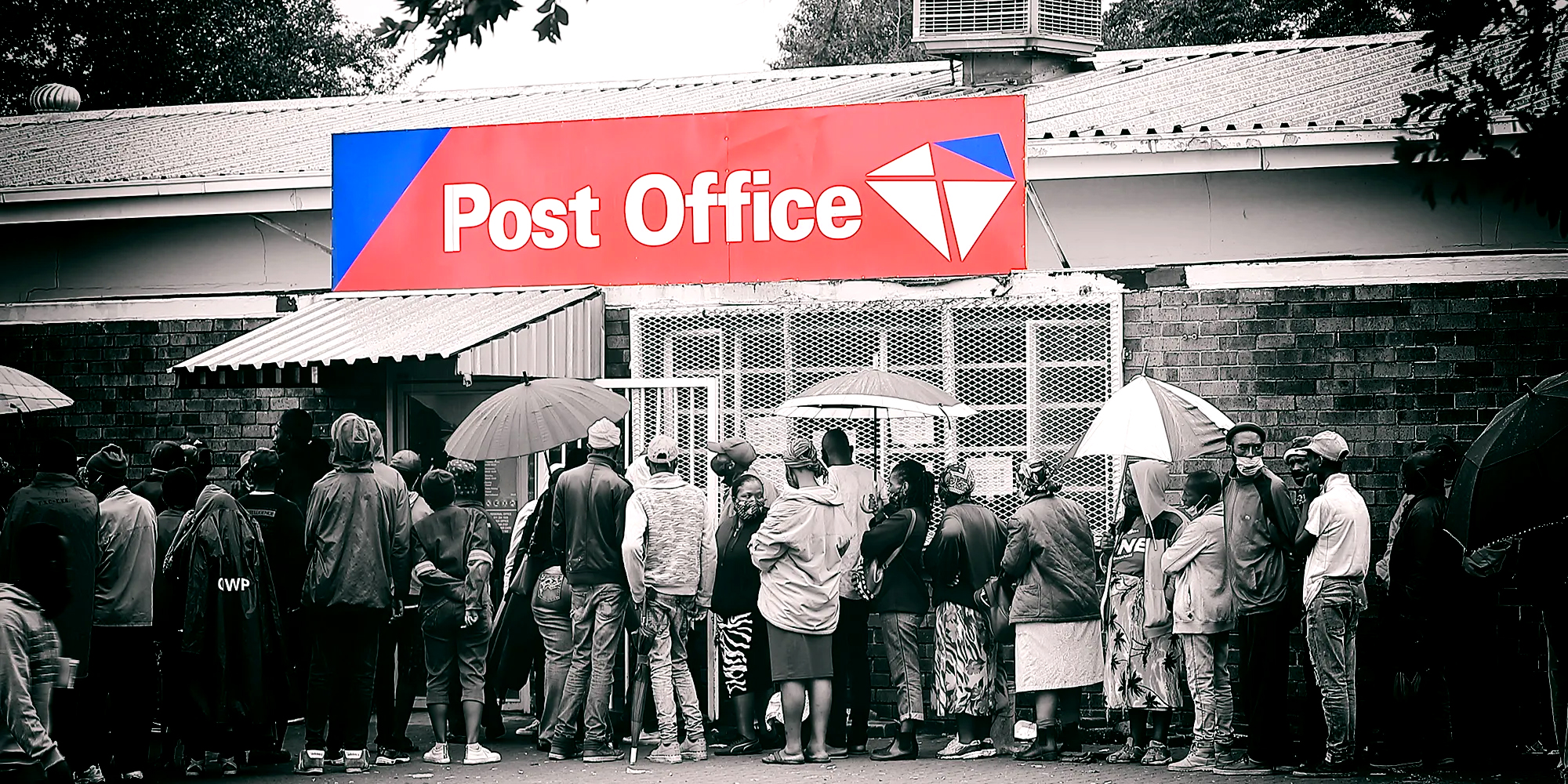By the end of October 2024, the SA Post Office was supposed to have run out of money, paving the way for the SOE’s liquidation.
It would be the end of the SA Post Office, whose founding roots go back to 1792 when the first branch/office was opened in Cape Town.
In the weeks leading up to October, SA Post Office management (mainly acting CEO Fathima Gany) warned of an incoming “Day Zero” and needing a taxpayer-funded bailout of R3.8-billion to keep its operations going.
Without a bailout, the SA Post Office’s management warned that the SOE would run out of money by 31 October 2024 — a situation labelled as “Day Zero”, portending a permanent closure of its doors.
In this worst-case scenario, 657 SA Post Office branches across the country would close, its remaining 6,208 workers would lose their jobs, and a fire sale of its assets would ensue to raise money and pay outstanding debts.
October has come and gone, and the worst-case scenario was avoided. The SA Post Office is still operational, making “Day Zero” warnings a damp squib.
So, were “Day Zero” warnings by the SA Post Office management overblown and designed to push the government into a corner to give the SOE R3.8-billion?
It seems so, considering that Finance Minister Enoch Godongwana, in refusing to give in to pressure and the bailout request, has been able to call the SA Post Office management’s bluff.
Individuals close to the SA Post Office have argued that it has enough money to sustain its operations until March 2025. This is because the SOE is in business rescue and this restructuring process has resulted in a smaller SA Post Office with reduced operating costs. Its many branches have been closed, more than a third of its workforce has been reduced through retrenchments and assets, such as properties it owns, have been sold, freeing up money to pay debt. The SOE has reduced its debt burden from R8.7-billion to R440-million by 30 June 2024.
The SA Post Office business rescue practitioners, Anoosh Rooplal and Juanito Damons, are yet to provide the latest update on the SOE’s financial position.
Only from March next year will the SA Post Office’s financial situation be in dire straits.
The situation around the SA Post Office is an interesting litmus test for Godongwana and his “tough love” approach to SOEs. In 2021, Godongwana invoked this approach, saying that SOEs can no longer be supported through bailouts because public finances are weak and the country’s debt situation has worsened. He declared that the performance by SOEs would have to drastically improve before receiving any further bailouts from the government. Taxpayers have been overly benevolent to the SA Post Office in recent years.
Over the past nine years, the government has given the SA Post Office cash bailouts amounting to R12.7-billion, a count by Daily Maverick has shown. Arguably, the bailouts were futile because they failed to return the SA Post Office to operational and financial sustainability.
Godongwana recently repeated the tough love approach in the Medium-Term Budget Policy Statement in October as he didn’t give the SA Post Office its requested R3.8-billion. During a briefing to journalists, Godongwana proposed that if money was given to the SA Post Office, it should be reprioritised or taken from the Department of Communications and Digital Technologies budget instead of the SOE getting new money. The department’s budget is R3.96-billion in fiscal year 2024/25, which would leave it with no money if it came to the SA Post Office’s rescue.
“We are on that path of making sure that not every SOE gets money. There is no money … We also need to ask each other about the future of the SA Post Office, said Godongwana, inferring that its ownership as a state-owned company should be reviewed.
Now is the time to think about the future of the SA Post Office.
In 1994, there was no internet to compete against the SOE and its mandate. It only had one job to do — deliver post — and the National Party and democratic governments had backed it all the way. Partnerships with private sector players will be crucial in the SA Post Office’s future and the SOE looking beyond delivering post.
A restructured SA Post Office should offer services such as motor vehicle licensing renewals, its logistics depot network across the country can be positioned as an attractive partner to retailers in the e-commerce space, and the SOE can partner with private sector players in the mail and parcel goods delivery industry.
The SA Post Office can use its extensive footprint (reaching rural areas) to venture into new services such as taking bank deposits, allowing pupils and educators to download educational materials, distributing medicines such as antiretrovirals, merging the SA Post Office technology and database with those of the Department of Home Affairs to issue/collect identity documents/cards and passports.
All of these ideas require money, which is where private sector players come in. But both goodwill and trust in SOEs have tanked, which is why state-owned airline SAA is still struggling to attract private sector investors today. DM
Business Maverick
After the Bell: Why the SA Post Office’s ‘Day Zero’ and insolvency threats were empty





